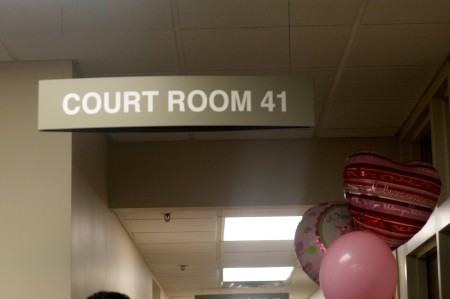*Disclaimer: I am not employed by a foster care agency. I do not work for the Department of Health and Human Services. I have not ever been a caseworker. Some of what I am going to explain may be limited in relevance to people providing foster parenting services in Nebraska or states with similar laws. Elements of how I’m explaining this may seem like a vast oversimplification for those with an in-depth knowledge of the system. I am sharing my observations as a foster parent because I wish somebody had been honest with me about this reality when we started the process.*
As domestic and international adoption become more complicated, pricey, and ethically questionable, more and more people are turning to adoption from foster care as a way to add to their family. We have adopted from foster care twice and continue to have an active foster parenting license in the hopes of caring for more kids (either short term or long term). I am very passionate about the need for quality foster parents, but also feel like there is a lot of misinformation out there. This is not intentional on the part of agencies, but exists because agencies don’t always anticipate the kinds of questions foster parents (especially those interested in adopting) need answers to. Foster parents themselves may not realize they are making incorrect assumptions because they haven’t had access to the right answers.
Adopting from foster care can happen in two ways. The first way happens when a child has already had their parental rights terminated and has no one stepping up to adopt them (biological family members or their current foster family). That child becomes a “waiting child” and a family who wants to adopt a child with no legal risk may step in to adopt them. There is often a reason these kids are not adopted by their foster family or by relatives. They may be part of a large siblings group, have special needs, or they are older. Once that child is placed in your home, they need to live with you for six months and then the adoption can be finalized. Many couples want the ease, swiftness, and legal certainty of adopting a child who is already legally free for adoption, but don’t realize that many of the younger, healthy, kids that haven’t suffered the trauma of multiple placements and will eventually be adoptable need a family who is willing to foster them first. In this case, foster parents need to prepare themselves for a lengthy process as the court system figures out if this child will be reunified with their parents or need an alternate permanency plan. It is risky, but for us the risks have been worth it in order to be with our children from the earliest moments they entered the system.

Heading into the courtroom on our daughter’s adoption day. (Photo by Renae Morehead)
So I wanted to tell you my biggest piece of advice for the family taking on a new placement with the thought of adoption: Prepare your hearts for a fifteen month wait before anyone will talk about adoption regardless of what progress the parents are making.
The Adoption and Safe Families Act was passed by the US Congress in 1997 and sets out the federal guidelines for how states should handle foster kids. Each state also has it’s own laws, but in the federal legislation it states that:
When a child has been in foster care for 15 of the last 22 months, the department “shall file a petition to terminate the parental rights of the child’s parents” unless the child is being cared for by a relative, the state has documented a “compelling reason for determining that filing such a petition would not be in the best interests of the child,” or the state has not made the reasonable efforts necessary to achieve the goal of the case plan where the goal is reunification.
While each state will have its own reasons for why a parent may have their rights terminated, many of those criteria are more subjective. When you see a child in foster care for 15 of the last 22 months, that is very objective. As a foster parent who longs to see kids in their permanent home as quickly as possible, it is often difficult to see them just waiting out the clock for 15 months. Coming from an adoption background, I initially couldn’t understand why nobody was in a hurry. If it is clear that a parent isn’t working on the case goals, why wasn’t anybody talking to them about relinquishment instead of just sitting back and waiting for that magical 15 month mark?
Why it makes sense for the biological parent:
First of all, the problems that lead to getting a child removed are rarely quick fixes. Rehabilitation, stable jobs, safe housing, improved parenting skills—all of these are things that take a lot of serious time and effort to fix and you want to see multiple months of progress before you’d put a child back into that situation. That all makes sense to everybody involved, but it’s the cases where parents don’t seem to be actively working on case goals that are frustrating. Here’s why (at least one reason) even if a parent doesn’t seem to be making progress, nobody is going to push them towards relinquishment prior to the 15 month mark: they are entitled to services. While they have a child in foster care, they have a team of people trying to help them get on their feet. This may be the first time someone is talking to them about how to be a good parent, or connecting them with resources to help them deal with a substance abuse issue, or helping them figure out how to improve their job skills. If the court asks them to achieve certain goals, then they need to help them figure out how to make that happen. So even if it doesn’t appear they are going to be able to parent the child currently in foster care, it doesn’t make sense to have them relinquish rights and lose access to the other services they are being offered. Nobody is in a hurry, least of all the parents.
Why it makes sense for the child:
If it looks like an adoption plan for this child is in the future, it can be tempting to want to see things speed up. We can see this as being in “the best interests of the child” since timely permanency is really important to a child’s sense of stability. But here’s why it’s important that parents have the full 15 months: Adoption doesn’t end the relationship between the biological parent and child. It changes it. For sure. It ends the legal relationship between them, but that parent continues to matter to their child. It is good for parents to get the chance to get their life turned around even if the positive changes won’t result in the child returning to them. This may mean that they have the skills or at least know their resources so a future child doesn’t end up in foster care. It may mean that they become a safe person to have an open adoption with. These are good things for the child in your home. (In Nebraska if a parent goes without seeing their child for 6 months, this is considered abandonment and is grounds for termination of parental rights. I fully agree with that and in fact would prefer to see that amount of time shortened, as it is in other states. If a parent is making no attempt at parenting or having contact with their child, the best thing for the child is to have permanency as soon as possible.)
Why it makes sense for the legal team:
You may be able to look at the legal reasons for termination of parental rights and see that the child in your home fits one of those categories. But because many of those categories are subjective, it is up to the legal team to decide if the parent’s actions were serious enough to file termination. Having a child in foster care for 15 months is very cut and dry. It isn’t difficult to prove and isn’t really open to debate (although there can be exceptions to filing termination at 15 months based on a variety of factors). Generally speaking, the lawyers filing for termination will be more comfortable with waiting for that 15 month mark and the lawyers defending the parents won’t want to consider relinquishment until that point.
Why it makes sense for the foster parent:
This is a really painful process for foster parents. We love the little people in our home and if we see that biological family members don’t seem to get the urgency of the situation, we may really want to see a push for closing a case as quickly as possible. This is where I have personally had to take a step back and put myself in the shoes of our biological families. If I were them, how much time would I want or NEED to be ready to parent? What if I was deep in poverty or a substance abuse issue or had no family support or didn’t know how to parent or was a “graduate” of foster care myself? As an adoptive parent, I also want to know everything was done with the utmost respect for the law. I never want to leave an open door for someone to question the legality of our adoption. It is very important to me as I talk to my children about their adoptions that I feel 100% certain their parents weren’t going to be able to raise them. It would have made our lives easier if the parents had relinquished earlier in the process, but I’m not sure I would have felt confident that it was a well-informed decision. I’d have to live with that reality for the rest of my life. As it is, I KNOW the birthparents of my children were offered all the services and time necessary to become successful parents and they made choices that ended in their children needing to be permanently raised with us for their own safety. It’s sad, but it’s also a documented fact.
The 15 months you wait to see a child achieve permanency can be really emotionally challenging. And I’m not even addressing the cases that go longer or get held-up in court once termination has been filed! I think if I had been able to have that 15 month goal in mind it would have helped me not feel so anxious in the early days of a case. And if things go more quickly, you’ll be pleasantly surprised. If we have unrealistic expectations, it only becomes more painful as things seem to drag on. Be an advocate for your foster children! Don’t let their needs go unmet or their voices be unheard. But as you’re advocating, understand where your team is coming from and let go of the idealized timeline you might be holding on to. It just might save your sanity.

10 Comments
Leave a reply →